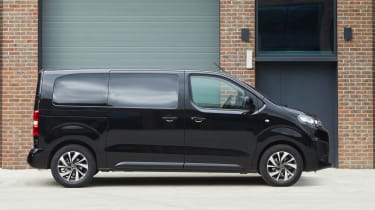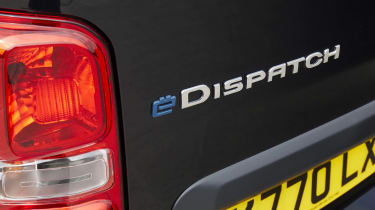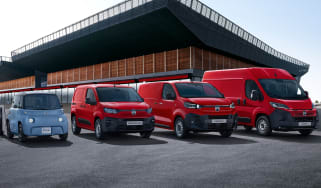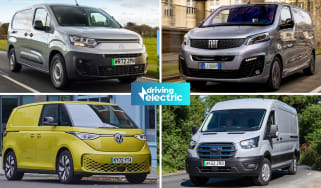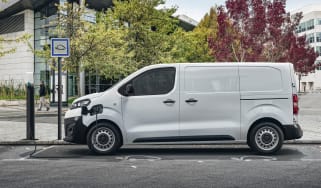Citroen e-Dispatch review
The Citroen e-Dispatch is a medium-sized fully electric van with a range of up to 211 miles. It's one of the best zero-emissions light commercial vehicles you can buy
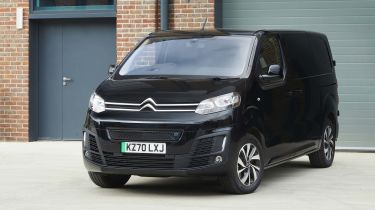
Pros
- Long range
- Car-like handling
- Decent value for money
Cons
- Rearward visibility
- No Crew Van option
- Not the biggest in the class
| Model | Range | Wallbox charge time | Rapid charge time |
|---|---|---|---|
| 50kWh | 143 miles | 7hrs 30mins (0-100%, 7.4kW) | 32mins (0-80%, 100kW) |
| 75kWh | 196 miles | 11hrs 30mins (0-100%, 7.4kW) | 45mins (0-80%, 100kW) |
The Citroen e-Dispatch is the electric version of Citroen’s medium-sized panel van, and uses the same technology as the Vauxhall Vivaro Electric, Peugeot e-Expert and Toyota Proace Electric, so there’s a 134bhp electric motor under the bonnet rather than a diesel engine. There’s plenty of torque for carrying heavy loads, plus the motor is smooth and quiet, while performance is pretty good, too.
There are two battery options for this electric van – 50kWh and 75kWh. The smaller of the two is also used in the Peugeot e-208, Peugeot e-2008, DS 3 Crossback E-TENSE, Vauxhall Corsa-e, Vauxhall Mokka-e and Citroen e-C4, so it’s tried and tested – and in the e-Dispatch it can manage 143 miles of range on a charge.
You’ll most likely want to pay extra for the larger 75kWh battery, which boasts a more useful 196 miles of range. Of course, that’s similar to its Vauxhall, Peugeot and Toyota sister models, but the Mercedes eVito and Volkswagen eTransporter can’t go that far between charges. The Citroen’s brakes can recharge the battery, and they don’t feel unpleasant to use like in some electrified vans – but you can’t drive the e-Dispatch using just one pedal like you can in some electric cars.
Like the normal Dispatch panel van, the electric model comes in XS, M and XL sizes. Going up through the range, you can carry 4.6 cubic metres’ worth of stuff in the XS, then 5.3 and 6.1 cubic metres respectively for the M and XL. The cargo area isn’t oddly shaped or reduced as a result of the batteries – they’re all stored under the floor, which is just as flat as in the normal van.
Where the Citroen does concede some ground is load space and its one-tonne maximum payload, which is around 200kg less than the diesel Dispatch. Still, thanks to twin side doors, there’s good access to the load area and you can even add power-assisted remote opening on high-spec models, along with glass for the side and rear doors.
The entry-level model is Enterprise Pro, which is available in the full range of XS, M and XL body lengths and includes 16-inch steel wheels, twin sliding side doors, daytime running lights and a full-size steel spare wheel. Inside, there's a dual passenger bench with a folding outer seat and a fold-down writing table on the back of in the centre seat. A load-through flap in the bulkhead enables extra-long items to be transported, too. On-board technology includes rear parking sensors, automatic lights and windscreen wipers, a seven-inch colour touchscreen with Bluetooth, digital radio, Apple CarPlay and Android Auto.
Driver Pro spec is available with the M body size only, and builds on that kit list with 17-inch alloy wheels, body-coloured front and rear bumpers, metallic paint, LED daytime running lights, front and rear parking sensors, a 180-degree rear parking camera, sat nav, a head-up display and a safety pack. The latter adds lane-departure warning, speed-limit recognition, intelligent speed adaptation and driver attention alert.
Up front, space is reasonable, although it might be tight with three in the cab and there isn’t as much cabin storage as in some rivals. But, like all electric vans, the e-Dispatch is quiet and very refined. The driving position is more car-like than rivals', but it’s still very comfortable and there are light, user-friendly controls throughout the cabin.
You can select from three driving modes on the move: Eco, Normal and Power. When we tested the e-Dispatch, Eco mode added 10 miles to the range, while Power reduced it by 10. Charging an electric van is arguably one of the biggest downsides to owning one. It'll take seven and a half hours to replenish the 50kWh model from 0-100% using a home wallbox, or 11 hours and 30 minutes for the 75kWh version.
An 11kW on-board charger is available, which reduces the charging time for the big battery to seven hours if you find a suitable charger, while 100kW DC rapid charging can replenish the 50kWh version from 10-80% in half an hour – or 48 minutes for the 75kWh.
Overall, the Citroen e-Dispatch deserves to be shortlisted if you’re considering buying a medium-sized electric van – especially if you go for the 75kWh variant. The only point of difference may well be whether you can get a better deal from a specific dealer on one of its Toyota, Vauxhall or Peugeot sister models.

